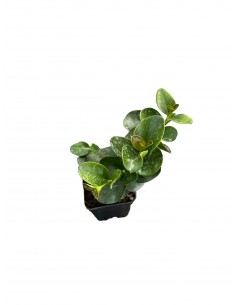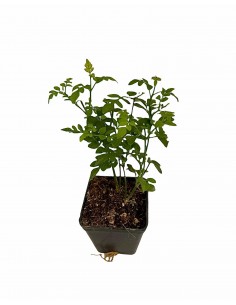Litchi tree
Generalities:
The litchi or cherry of China (Litchi chinensis Sonn.) Is a plant of the Sapindaceae family, the only species of the genus Litchi.
It is a tropical and subtropical plant native to southern China and Southeast Asia, now grown in many parts of the world. The fresh fruit has a white, delicate and fragrant pulp. The inside of the fruit has a layer of sweet, white and translucent pulp. Lychees become part of a wide variety of dishes and desserts, and are particularly popular in China.
- Height: 120cm
Generalities:
Lychee, a fruit originally from China, is rich in vitamin C and low in fat and sodium, it is useful for the nervous system and the circulatory system. Known by the obsolete names of "Chinese cherry" and "desert grape", lychee is a berry with a firm and wrinkled rind, pink in color, which inside protects the whitish, translucent, fleshy and delicate pulp, exquisitely sweet, which reminiscent of grapes but with various fragrances of flowers. The taste is defined as muscat and rose grape. The berry measures approximately 3 cm in length and a little over an inch in width. Litchi is a highly healthy exotic fruit, rich in vitamins, capable of fighting degenerative diseases and facilitating blood circulation. The content of vitamin C, equal if not higher than that of citrus fruits, and of other vitamins, especially those of group B, put it among the first places in the list of the most beneficial fruits known. It is no coincidence, in fact, that the Chinese, a people very attentive to the natural principles contained in the plant world, make extensive use of it and encourage its cultivation. Vitamin B3 seems to intervene in constricting blood vessels and dilating them, purifying the blood and intervening on oxidative functions, which makes it essential in the fight against degenerative diseases such as arteriosclerosis. The concentration of minerals is also significant: potassium and magnesium, for example, help the heart and strengthen the circulatory system. Lychee is rich in antioxidant substances whose contribution is important against flu syndromes and protect the skin against UV rays and aging. These substances strengthen the immune system, preventing bacterial and viral infections.
Cultivation and Care :
Lychee, a tropical fruit, requires hot and humid summers and rather dry winters. In our country it is possible to grow it outdoors only in the South (there are crops in Sicily and Calabria) but it does not have an easy fruiting. The tree loves sunny places, with temperatures of 20-25 ° C, but the young specimens, up to 2 years of life, are preferably sheltered from the summer sun and also from strong winds. Adult specimens are able to withstand intense cold, even if for a short time. Flowering and fruiting are stimulated by a resting phase, during the winter, with a temperature between 0 and 13 ° C. Watering in summer must be abundant and regular, without leaving the soil too wet. The plant needs high humidity, which it can absorb from the air, otherwise it can lose its leaves and fruits. In winter, irrigation will be suspended or very reduced. The plant needs loose soil, rich in organic matter and well drained. In tropical areas the tree grows in clayey or even muddy soils. In the subtropics, the Lychee prefers a sandy and draining soil.




















